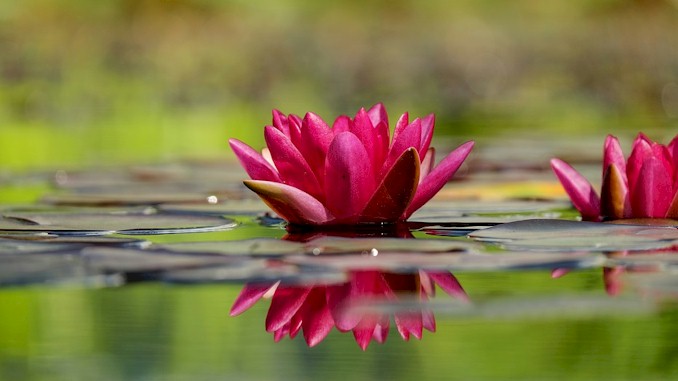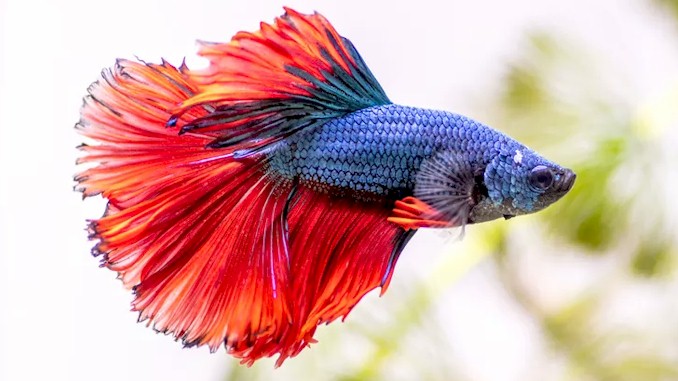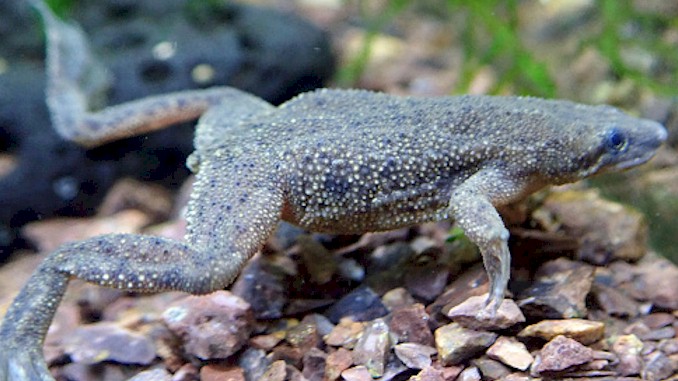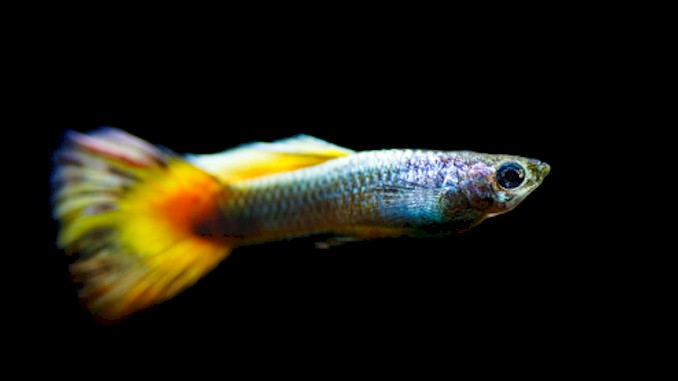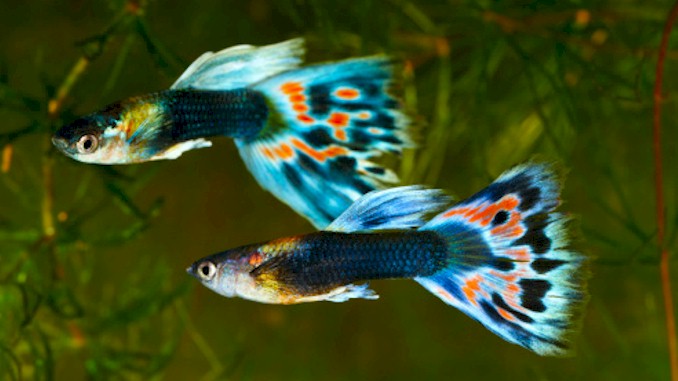The Pond Life: Raising Guppies in Nature
As an experienced aquarist, I have often been asked if guppies can survive in a pond. It’s a question that requires careful consideration of several factors, including water temperature, depth, and the presence of predators. After years of studying and experimenting with various guppy populations in different pond environments, I am confident that I have the ultimate guide to answer this question. In this blog post, I will provide you with all the information you need to know about keeping guppies in a pond, including their requirements, potential challenges, and tips for success. Whether you are a seasoned pond owner or a novice aquarist, I am here to help you ensure the health and happiness of your guppy population.
Guppies can live in a pond as long as the pond meets their basic requirements. Guppies are hardy fish that can adapt to various water conditions, but they prefer warm water temperatures between 72-82°F and a pH range of 7.0-8.2. The pond should be at least 20 gallons and have enough vegetation and hiding spots to provide a natural habitat for the fish. However, it’s essential to protect guppies from predators like birds and raccoons and maintain proper filtration and water quality. Overall, guppies can thrive in a pond with proper care and attention.
While the information provided in the previous paragraph gives you a good idea of whether or not guppies can live in a pond, there’s still much more to consider when it comes to caring for these beautiful fish. In the following paragraphs, I will delve deeper into the specific requirements and challenges of keeping guppies in a pond. You’ll learn about the best types of vegetation to include, how to create a balanced ecosystem, and how to prevent and treat common health issues that guppies may face. Whether you’re a beginner or an experienced aquarist, I’m confident that the information I’m about to share will help you create a thriving pond environment for your guppies. So, let’s dive in!
Are Guppies Good For Ponds
Guppies are a popular choice for home aquariums, but can they be suitable for ponds too? The answer is yes. Guppies can be an excellent addition to a pond ecosystem. In fact, guppies have been used for decades in mosquito control programs because they feed on mosquito larvae, which can reduce the mosquito population in the area.
Aside from their mosquito control abilities, guppies can also contribute to the overall health of your pond. They help keep the water clean by eating algae and other organic matter, and their waste can provide valuable nutrients for plants and other aquatic life. Guppies are also a great choice for beginners because they are easy to care for and come in a variety of colors and patterns.
However, it’s important to note that guppies are not without their challenges in a pond environment. They are small and can become prey for larger fish or predators like birds and raccoons. It’s important to create a balanced ecosystem in your pond to ensure that your guppies have the proper shelter and hiding spots to avoid becoming prey. Additionally, guppies prefer warm water temperatures and may not survive in colder climates.
In summary, guppies can be a great addition to your pond ecosystem as they can contribute to the overall health of your pond and reduce the mosquito population. However, it’s important to create a balanced ecosystem and provide proper care to ensure the survival and well-being of your guppies. With proper planning and attention, guppies can be a beautiful and beneficial addition to any pond.
How Long Can You Keep Guppies In a Pond
Guppies can live outdoors if the weather is warm enough. As I said before, guppies can handle temperatures up to 68°F (20°C). So, if it doesn’t get colder than that, you can leave your guppies outdoors all year long. But that’s very unlikely.
Usually, you can keep your guppies outdoors from April to October. When October comes, and the leaves start to fall, you can move them indoors in a tank with warm water.
You could also use a heater in the pond to keep the water cozy. But that’s not easy or cheap. If it gets too cold outside, the heater might not work well. And it will cost you a lot of money.
To sum up, you can have your guppies in an outside pond in spring and summer, and when autumn and winter arrive, you can bring them indoors in the aquarium.
What Are The Dangers Of Keeping Guppies In Outdoor Ponds
While guppies can be a great addition to outdoor ponds, there are some potential dangers and challenges to be aware of. Here are some of the most significant risks to consider before adding guppies to your outdoor pond:
- Temperature Fluctuations: Outdoor ponds are subject to temperature fluctuations that can be harmful to guppies. Sudden drops in temperature can lead to stress, disease, and even death. It’s essential to monitor the water temperature regularly and make adjustments as necessary to ensure the survival and well-being of your guppies.
- Predators: Guppies are small and can become prey for larger fish or predators like birds and raccoons. It’s important to create a balanced ecosystem in your pond to ensure that your guppies have the proper shelter and hiding spots to avoid becoming prey.
- Water Quality: Poor water quality can lead to stress, disease, and a reduced lifespan for guppies. It’s essential to maintain proper filtration and regular water changes to keep the water clean and free from harmful chemicals and toxins.
- Overcrowding: Overcrowding can lead to stress and disease among guppies, which can significantly reduce their lifespan. It’s essential to provide enough space for your guppies to swim and thrive in your pond environment.
- Disease: Guppies are susceptible to several diseases, including fungal infections, bacterial infections, and parasitic infections. It’s essential to monitor your guppies for signs of illness and take prompt action to prevent the spread of disease.
In summary, while guppies can be a great addition to outdoor ponds, there are several potential dangers and challenges to be aware of. By maintaining proper water quality, creating a balanced ecosystem, and providing adequate space and protection, you can help ensure the survival and well-being of your guppies in your outdoor pond.
Do Guppies Grow Faster In Outdoor Ponds
One of the most significant advantages of keeping guppies in an outdoor pond is the potential for faster growth rates. However, several factors can affect how quickly your guppies grow, including water temperature, water quality, and diet.
In general, guppies kept in warmer water temperatures tend to grow faster than those kept in cooler water. Water temperatures between 75-82 degrees Fahrenheit are ideal for promoting guppy growth. However, it’s essential to monitor the water temperature carefully, as sudden temperature changes can be harmful to your guppies.
Water quality is also essential for promoting healthy growth in guppies. Poor water quality can lead to stress, disease, and a reduced lifespan, so it’s important to maintain proper filtration and regular water changes. Adding live plants to your outdoor pond can also help improve water quality and provide a natural food source for your guppies.
Finally, diet is another critical factor in promoting faster growth rates in guppies. A diet that is high in protein and essential nutrients can help support healthy growth and development. In addition to commercially available guppy food, you can also feed your guppies live or frozen foods, such as brine shrimp, bloodworms, and daphnia.
In summary, guppies can grow faster in outdoor ponds than in indoor aquariums, but several factors can affect their growth rates. By maintaining optimal water temperature, water quality, and a healthy diet, you can help promote healthy growth and development in your outdoor pond guppies.
What Should You Feed Your Guppies In An Outdoor Pond
Feeding your guppies a healthy and balanced diet is essential for their overall health and well-being. In an outdoor pond setting, there are several different types of food that you can offer your guppies to keep them healthy and thriving.
Commercial Guppy Food: Commercially available guppy food is specifically formulated to meet the nutritional needs of guppies and is an easy and convenient way to provide your fish with a well-rounded diet. Look for high-quality guppy food that contains a mix of protein, fat, and essential nutrients, and avoid cheap, low-quality options.
Live Foods: Live foods are a great option for guppies in outdoor ponds, as they provide a natural and varied diet. Brine shrimp, bloodworms, and daphnia are all excellent live foods for guppies, as they are high in protein and essential nutrients. You can also consider cultivating your own live food cultures to ensure a steady supply.
Frozen Foods: Frozen foods, such as frozen brine shrimp and bloodworms, are a convenient and easy way to provide your guppies with a diverse diet. They offer many of the same benefits as live foods without the need for culturing or maintenance.
Vegetables: In addition to protein-rich foods, guppies also need plant matter in their diet to stay healthy. Blanched spinach, peas, and zucchini are all good options for guppies, as they are high in essential nutrients and fiber.
Feeding Frequency: It’s important to feed your guppies the right amount and frequency to prevent overfeeding and maintain good water quality. In general, feed your guppies small amounts two to three times per day, only giving them what they can consume within a few minutes.
In conclusion, feeding your guppies a healthy and varied diet is crucial for their overall health and well-being. Commercial guppy food, live and frozen foods, and vegetables are all good options for guppies in an outdoor pond setting. Be sure to feed your guppies in moderation and monitor their feeding behavior to ensure they are getting enough food without overfeeding.
Can You Breed Guppies In An Outdoor Pond
Breeding guppies in an outdoor pond is a great option for those who enjoy watching their fish thrive in a natural environment. However, it’s important to note that there are certain considerations to keep in mind to ensure a smooth breeding process.
Firstly, the size of the pond is crucial. While guppies are small fish, a pond that is too small will not be able to accommodate the fry that are born during the breeding process. With guppies producing more than 100 fry at a time, a larger pond is necessary unless you plan to remove the fry and keep them in a separate container.
It’s also important to ensure that the outside temperature is suitable for guppies. As the pond is exposed to the elements, it’s crucial to maintain a stable water temperature to avoid stress and sickness. A heater can be used to regulate the water temperature, and the pond should be deep enough to prevent rapid heating.
To ensure a healthy breeding environment, equipment such as a filter, fishnet, gravel vacuum, and debris removal tools are necessary. These will help maintain clean water conditions and monitor the guppy’s health.
While breeding guppies in an outdoor pond may seem daunting, it’s not more difficult than breeding them in an indoor aquarium. With suitable water conditions, guppies can breed without much difficulty. It’s important to remove the fry from the pond or provide hiding places to prevent them from being eaten by their parents.
Breeding guppies in an outdoor pond is a rewarding and enjoyable experience, but it requires careful consideration and maintenance to ensure the health and well-being of the fish.
How To Set Up a Guppy Pond Outside
Setting up a guppy pond outside is not a challenging task, but it requires some planning and preparation to ensure that your fish thrive in their new environment. Here are some steps to follow when setting up a guppy pond outside:
- Choose the right location: When setting up a guppy pond outside, it is crucial to choose the right location. Select a spot that is not in direct sunlight, as this can cause the water to overheat and harm your fish. Also, make sure the location is not prone to flooding or runoff from other areas that could contaminate the pond water.
- Prepare the pond: Next, prepare the pond by digging a hole and lining it with a pond liner. Make sure the liner is large enough to accommodate your guppies and has enough depth to prevent predators from easily accessing the fish.
- Add water: Once the pond is prepared, fill it with water. Tap water is usually fine, but make sure to add a dechlorinator to remove any harmful chemicals.
- Add filtration: To keep the water clean and healthy for your guppies, add a filtration system to the pond. This can be a simple sponge filter or a more complex system, depending on the size of the pond and the number of fish.
- Add plants and decorations: Guppies love plants and decorations, so add some to the pond to make it more comfortable for your fish. Floating plants such as duckweed or water lettuce can provide shade and hiding spots for your guppies, while submerged plants like hornwort or java moss can oxygenate the water and provide a place for fry to hide.
- Acclimate your guppies: Once the pond is ready, it’s time to introduce your guppies. Make sure to acclimate them slowly to the new water conditions by gradually adding some of the pond water to their transport container and monitoring them for signs of stress.
- Monitor water parameters: Finally, make sure to monitor the water parameters regularly to ensure they remain within safe levels for your guppies. Test for ammonia, nitrite, and nitrate levels, as well as pH and water hardness, and make any necessary adjustments to keep your fish healthy and happy.
With these steps, you can set up a beautiful and thriving guppy pond outside that will provide a great environment for your fish to breed and live.

